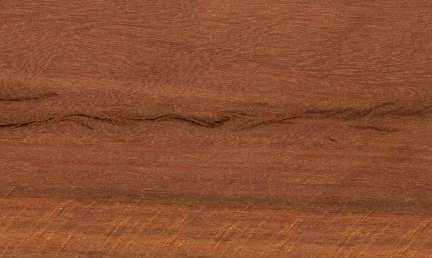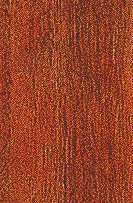 
Poplar gum (Eucalyptus alba)
Family: Myrtaceae
Common names: Poplar gum
Distributed in: Australia, Fiji, Indonesia, Malaysia, Papua New Guinea, Sri Lanka (Oceania and S.E. Asia)
Distribution overview: North and central Queensland, Australia, though fairly sparse.
Common uses: Boat building, Building construction, Building materials, Cabin construction, Canoes, Carvings, Construction, Crossties, Domestic flooring, Excelsior, Factory construction, Factory flooring, Flooring, Heavy construction, Joinery, Lifeboats, Mine timbers, Parquet flooring, Pile-driver cushions, Piling, Poles, Railroad ties, Shipbuilding, Sub-flooring, Utility poles, Woodwork
Environment profile: Status has not been officially assessed
Tree size: Trunk diameter is 250-300 cm
Colors: the heart isReddish brown, Yellowand the sapwoodWhitish, Yellow.The grain isInterlocked, the textureMediumand the lusterMedium
Natural durability: Susceptible to insect attack, Very resistant to termite attack.
Odor: No specific smell or taste
Kiln Drying Rate: Naturally dries slowly
Drying Defects: Internal Honeycombing Possible, Splitting
Ease of Drying: Slowly
Comments: Bark tannin content is estimated at 30 to 32 percent
Blunting Effect: Moderate effect
Boring: Poor results
Carving: Fairly difficult to carve
Cutting Resistance: Moderate to saw
Gluing: Fairly Easy to Very Easy
Mortising: Very Good to Excellent
Moulding: Fairly Easy to Very Easy
Movement in Service: Fairly Easy to Very Easy
Nailing: Pre-Boring Recommended, Very Good to Excellent
Planing: Very Good to Excellent
Resistance to Impregnation: Sapwood is treatable
Response to hand tools: Fairly Difficult to Difficult to Work
Routing recessing: Fairly Easy to Very Easy
Sanding: Very Good to Excellent Results
Veneering qualities: Suitable for peeling, Suitable for slicing
Screwing: Fairly Easy to Very Easy, Very Good to Excellent Results; Turning: Turning qualities are poor
Painting: Very Good to Excellent; Polishing: Very Good to Excellent; Staining: Very Good to Excellent;
- Numerical data Metric
- Numerical data English
- Strength properties
- References
 |
 |
 |
 |
| Item |
Green |
Dry |
Metric |
| Specific Gravity |
0,83 |
0,88 |
|
| Density |
|
849 |
kg/m3 |
| Bending Strength |
854 |
1157 |
kg/cm2 |
| Crushing Strength |
155 |
164 |
kg/cm2 |
| Hardness |
|
733 |
kg |
| Impact Strength |
637 |
675 |
cm |
| Shearing Strength |
|
|
kg/cm2 |
| Stiffness |
|
119 |
1000 kg/cm2 |
| Tangential Shrinkage |
|
|
% |
| Radial Shrinkage |
|
|
% |
| Weight |
|
|
kg/m3 |
| Maximum Load |
|
|
cm-kg/cm3 |
| Toughness |
|
156 |
cm-kg |
| Static Bending |
|
695 |
kg/cm2 |
|
 |  |  |  | | Item | Green | Dry | English | | Bending Strength | 12152 | 16464 | psi | | Crushing Strength | 2215 | 2342 | psi | | Density | | 53 | lbs/ft3 | | Hardness | | 1617 | lbs | | Impact Strength | 251 | 266 | inches | | Maximum Crushing Strength | 7507 | 8908 | psi | | Static Bending | | 9898 | psi | | Stiffness | | 1705 | 1000 psi | | Toughness | | 136 | inch-lbs | | Specific Gravity | 0.83 | 0.88 | | | Weight | 53 | 43. | lbs/ft3 | |
Bolza, E., Kloot, N. H. 1963. The Mechanical Properties of 174 Australian Timbers. Technological Paper No. 25. Division of Forest Products, Center for Scientific and Industrial Organization (CSIRO, Melbourne, AustraliaKeating, W.G., Bolza, E.,1982,Characteristics properties and uses of timbers. South East Asia, Northern,Australia and the Pacific,C.S.I.R.O. Div. Chemical Technology,Inkata Press,1Kloot, N.H. and E. Bolza. 1961. Properties of Timbers Imported into Australia. Division of Forest Products Technological Paper No. 12. Commonwealth scientific and Industrial Research Organization, Melbourne, AustraliaSmith, W.J., W.T. Knyaston, M.L. Cause, and J.G. Grimmett. 1991. Building Timbers - Properties and Recommendations for their Uses in Queensland.Technical Pamphlet No. 1. Queensland Forest Service, Department of Primary Industries, Queensland, Australia.
|









